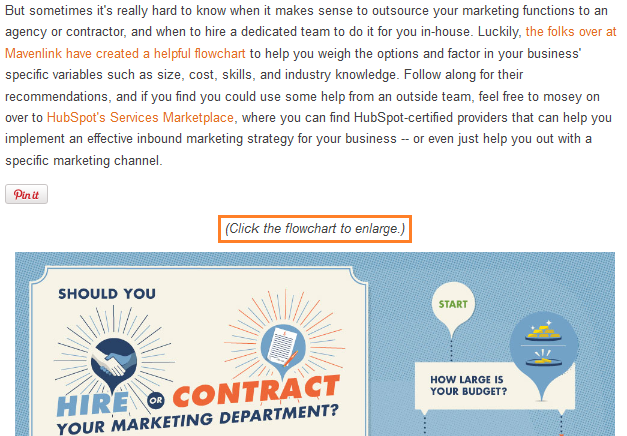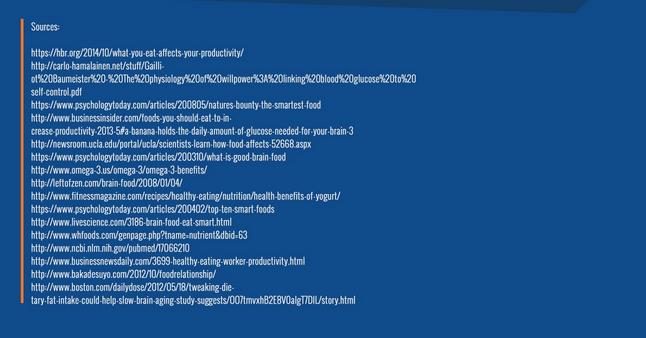How To Cite Sources For A Blog
The best content marketers aren't afraid to share. Share content. Share links. Share ideas. Share data. The thing is, sometimes marketers get a little protective of their stuff because there are less-than-scrupulous people out there who take content and then try to pass it off as their own. All that hard work, and none of the credit. Not cool, less-than-scrupulous people. Not cool. But sometimes it isn't a matter of people being jerks -- they might just not know how the internet "works." You're supposed to share content, but you're also supposed to give credit where credit is due. So to clear up any confusion and ensure you (and anyone you do business with) is following generally accepted internet sharing etiquette, this post will outline how to cite internet sources. Blogs are hotbeds of source attribution issues, probably just due to the sheer volume of content the format offers. Gated and long-form content assets are prone to the same attribution issues, too, but perhaps to a lesser extent since the volume is typically lower, and turnaround times longer. So let's walk through a couple common scenarios bloggers come across and figure out how to address them -- but bear in mind you can apply these attribution methods to your long-form content assets, too. Let's say you're quoting another blogger in your post -- hey, sometimes you literally couldn't have said it better yourself. First of all, you have to actually quote them. Don't just take their words and adopt them as your own; they took time to think of that explanation. But there's still some internet etiquette that goes along with quoting someone other than just throwing some quotation marks around their statement. Here's an internet-friendly way to quote someone in your content (taken from an old blog post of ours): Not only does David Meerman Scott get credit for his quote, but his company is mentioned with hyperlinked text to his website. An added bonus is the link to his Twitter handle -- by no means necessary, but certainly a nice gesture. Aside from mentioning the person's name, it's also nice to provide them with an inbound link -- either to the page from which you drew your quote, or to another meaningful page on their site. One thing to keep in mind when quoting text from someone else's website is that many companies have content usage guidelines that will let you know how, or if, they want you to use their content. Take a look at HubSpot's content usage guidelines to get an idea what these might look like, but in a nutshell, they're the guidelines laid out to try to ensure you use the right stuff in the right way. For example, one of the notable parts of our content usage guidelines is that you can quote our content on your website, but only up to 75 words; this is to prevent duplicate content issues that would impact both our own organic search rankings, and the other website's. So when quoting content from another source, do a quick check to see whether they have similar guidelines to which you should adhere. Now let's say you have data you'd like to cite in a blog post. What do you do? This: The copy around the statistic not only gives credit to the company that published the data, but eMarketer also receives a link back to their site. That link, however, should not just go to their homepage. Point that link to the actual page on which that data lives. This is for the benefit of the reader, too, so they can dig into the research more if they're so inclined. There's one final caveat to your blog post/long-form citations that is just a matter of proper internet etiquette. If you found a quote, article, or data point via another website, it's nice to indicate that in the copy. For example, if you're newsjacking and you found the story via another website, give them a nod that they're the ones who broke the story originally. Or, if you're reading a blog post and there's a particularly compelling quote contained therein from an industry influencer, it's nice to give credit to the blogger that called that out. You might phrase it like this: "Today we learned via the <link>New York Times</link> that <link>Twitter</link> is hiring a new type of CTO -- their first ever Chief Tweeting Officer." The NYT link should head to the article they published on the subject, and the Twitter link should head to their blog post or press release announcing the news. Make sense? Alright, on to social media. When you're sharing someone else's content in social media, the approach you take to give proper credit changes depending on the social network. Here's the breakdown: Simply include a "via @username" somewhere in the tweet. If you're retweeting someone's content but you edit their original tweet, be sure to change "RT" to "MT," which stands for "modified tweet." Facebook makes it pretty easy to give credit when you're sharing someone else's content right from their own timeline -- they have a 'Share' button ready and waiting for you, and they make it easy to see the originating URL, originating sharer, as well as the names of people who shared it. If you're citing content from elsewhere on the web, but want to give attribution to another person or company, you can find that person/company on Facebook and link to their Facebook Timeline in the status update. It'll look like this (note the WordStream hyperlink in the image below). If you're sharing content from another source and they don't have a Facebook page, then the link to their piece of content will suffice. Proper source attribution on LinkedIn is simple. Just include the link to the content you're citing in the update, and mention the person or company name. On Google+, it's customary to include the name of the person or company whose content you're citing in the text of your update, because you can then link to their Google+ profile, much like you would do on Facebook. Simply include a + or @ and their Google+ name -- they'll pre-populate just like they do on Facebook. Pinterest is all about content sharing, so it's no wonder proper source attribution is built right into the platform with their "Repin" button. When you go to repin content, however, sometimes the original creator has included a URL, hashtag, or other indicator of authorship. Don't edit that link out -- it's poor form. And marketers, beware. If you include your link in the "Description" section of your pin, you may get flagged as a spammer. Maintaining a blog takes help, sometimes from guest authors or ghost writers. If you're using a ghost writer, you don't have to give credit to that author. That's the whole point. They're ghosts. You can't see them. But if you're publishing a post from a guest blogger, you certainly should be giving them credit for their efforts. In a few ways, actually. Here's what you should be doing to give an e-nod to those writers: Some companies also outline very detailed guest blogging policies. If you're concerned about mitigating the differences of opinion on some of these issues, make sure you write out your own detailed guest blogging policies for your website so expectations are set up front. If you're a regular reader of this blog, you know we're behind sharing the wealth when it comes to visual content marketing -- and we love it even more if you can give credit to the original artist properly. Here's when you need to give credit, when you don't, and how to do it. If you've found an infographic or visualization on another site that you'd like to feature on your website, you should treat it similar to how you'd treat citing any other content on your website. Simply include a link to the original source's website where that visual lives, and include their name in the text. You should also try your best to uphold image quality when republishing their visual content -- if the website has embed code for that visual, use that code. This is why we try to make a point of creating embed code when we create visuals (and why we love that YouTube and SlideShare make it easy to grab embed code). It makes sharing easier for those that choose to republish the visual, and helps them maintain the quality and resolution in the process. If embed code isn't provided, you can also include instructions like "click to enlarge" for static images -- this helps ensure the visual fits the width of your website, but still provides a good reader experience. And what happens if you hired a designer to create something for your site -- how do you give credit to the designer? Well, it depends on the terms you've worked out together. You could hire a ghost designer (kind of like ghost writers) so that the content looks like it was designed in-house by your company. In that case, you don't have to worry about attributing the design work to anyone. If, however, you've agreed to give credit to a designer, there should be some space in the visual (not a lot, but some) that gives them credit for their work. Here's an example of how we gave credit to the designer in one of our infographics -- check out the bottom left: And what happens if you cite content from other sources in your infographic? Use that bottom section for that, too. Here's an example: If the list of source URLs is getting too unwieldy, you can also set up a URL to send people to for the sources: And remember, if you're creating a SlideShare, you have the benefit of being able to make links clickable within the SlideShare. If you'd like instructions for doing that, check out this blog post -- but this means that you can treat source content in a SlideShare with the same level of respect you treat source content in a blog post or elsewhere on your website. Much like your infographics and visualizations, how you cite photos and images featured on your website depends on where you sourced them. When you buy stock imagery, it's license free. You bought it, you own it, and you can do what you want with it. But many marketers are trying to find images for content such as blog posts, and don't want to pay for a stock photo every single time. Some people go to Google Images and simply find an image they like ... thing is, all those images have varying levels of permissions. So while it may be okay that some of them are used on your blog or website, that's not universally true of all of them. Some marketers have started to use Creative Commons to deal with this issue because they have filters that let you select images you can "use for commercial purposes" and/or "modify, adapt, or build upon." Unfortunately, you can't always trust those filters -- users have been known to upload photos and images that perhaps they have the license to use, but you do not. So if you want to be totally safe, I recommend purchasing a license to a stock photo site. There are also some free stock photo sources, like HubSpot's free stock photos and Death to the Stock Photo, that you can check out if you're on a tight budget. Of course, some people who have content online, including some marketers, don't want to share content at all and will get very upset if you do so -- even if you give them full and generous credit for it, links and all. What happens when you share content from them? Well, it's possible they'll contact you to take it down. Or, if they have the resources, they'll send a lawyer to do so. If that happens to you, I recommend respecting the fact that they don't want to share data, quotes, visualization, etc. -- it's probably not worth the headache to fight it. Editor's Note: This post was originally published in August 2012 and has been updated for freshness, accuracy, and comprehensiveness. 
How to Cite Sources in Blog Posts & Long-Form Content Assets
Citation Scenario #1:

Citation Scenario #2:

Citation Scenario #3:
How to Cite Sources in Social Media
To Cite Someone's Content on Twitter:
To Cite Someone's Content on Facebook:


To Cite Sources on LinkedIn:
To Cite Sources on Google+:
To Cite Sources Content on Pinterest:
How to Give Credit to Guest Authors and Ghost Writers
How to Cite Images and Visual Content
To Cite Visualizations, SlideShares, and Infographics:

To Cite SourcesWithin a SlideShare, Infographic, or Visualization:



How to Cite Photographs and Other Images:
The Caveat (There's Always a Caveat, Isn't There?)


Originally published Jul 7, 2015 8:00:00 AM, updated July 28 2017
How To Cite Sources For A Blog
Source: https://blog.hubspot.com/blog/tabid/6307/bid/33098/how-not-to-steal-people-s-content-on-the-web.aspx
Posted by: flynncrue1941.blogspot.com

0 Response to "How To Cite Sources For A Blog"
Post a Comment